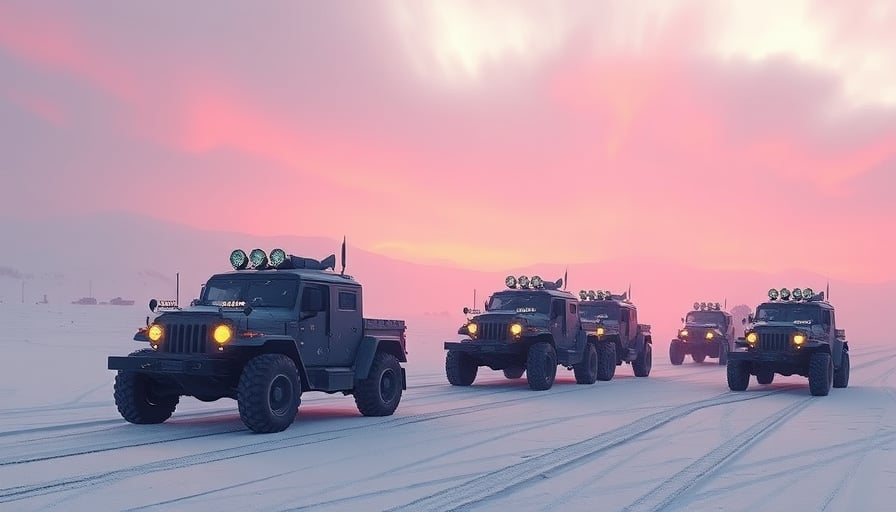Corporate News
General Dynamics Corp (NYSE: GD) and BAE Systems Hägglunds Form Strategic Teaming Agreement for Canadian Arctic Mobility Initiative
General Dynamics Corp, a diversified defense contractor listed on the New York Stock Exchange, announced a new teaming agreement with BAE Systems Hägglunds. The partnership is aimed at supplying the BvS10 Beowulf all‑terrain vehicle platform for the Canadian government’s Domestic Arctic Mobility Enhancement project. The collaboration leverages BAE Systems Hägglunds’ advanced vehicle design capabilities and General Dynamics Land Systems’ (GDLs) extensive in‑service support infrastructure to deliver a robust solution tailored to Arctic operational requirements.
Key Elements of the Agreement
| Aspect | Details |
|---|---|
| Vehicle Platform | BvS10 Beowulf, a modular all‑terrain vehicle engineered for high‑mobility operations in harsh climates. |
| Parties Involved | BAE Systems Hägglunds (vehicle design and production) and General Dynamics Land Systems (support, logistics, sustainment). |
| Program Focus | Canadian Domestic Arctic Mobility Enhancement – a procurement effort to upgrade the Canadian Armed Forces’ capability to operate effectively in polar and sub‑polar environments. |
| Roles & Responsibilities | BAE Systems Hägglunds delivers design and production expertise; GDLs provides in‑service support, maintenance, training, and supply chain management. |
Strategic Significance
Arctic Modernization Trend The partnership aligns with a broader trend of defense modernization in the Arctic region. Nations are investing in specialized platforms that can endure extreme temperatures, permafrost, and limited infrastructure. By combining vehicle design with comprehensive support services, the teaming arrangement positions the partners to meet the evolving demands of Arctic operations.
Synergistic Capabilities BAE Systems Hägglunds has a long history of developing all‑terrain vehicles, including the well‑known BvS10 series used by multiple NATO forces. General Dynamics Land Systems, meanwhile, has demonstrated a strong track record in sustaining complex systems for extended periods. The integration of these strengths enhances the value proposition for Canadian procurement, offering both cutting‑edge technology and reliable lifecycle support.
Industry Collaboration Model The agreement exemplifies a growing pattern within the defense sector, where firms form cross‑border teaming arrangements to combine complementary competencies. Such collaborations can accelerate development cycles, reduce procurement risk, and share research and development costs, thereby improving cost‑effectiveness for end‑users.
Economic and Geopolitical Context As global geopolitical attention shifts toward the Arctic, countries are exploring new logistics and operational pathways. Defense contractors that can deliver tailored solutions for these emerging markets are likely to see sustained demand. The teaming agreement could therefore serve as a template for similar joint ventures in other regions facing unique operational challenges.
Financial Implications
The announcement did not accompany any corporate actions or financial updates for General Dynamics Corp. As such, the immediate impact on the company’s stock price or earnings expectations is uncertain. However, the partnership could enhance future revenue streams through:
- Direct sales of BvS10 units under the Canadian contract.
- Ancillary revenue from sustainment, maintenance, and training services managed by General Dynamics Land Systems.
Conclusion
The collaboration between General Dynamics Corp and BAE Systems Hägglunds represents a focused response to the specific needs of Arctic mobility. By combining vehicle engineering excellence with comprehensive support capabilities, the partners are well positioned to deliver a solution that meets both operational effectiveness and logistical resilience. The agreement also illustrates broader sectoral dynamics, highlighting how defense companies are increasingly leveraging cross‑industry partnerships to address specialized operational environments and capitalize on emerging global defense trends.




